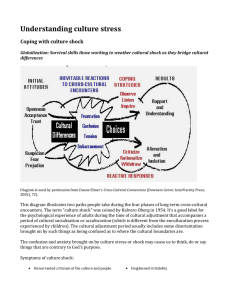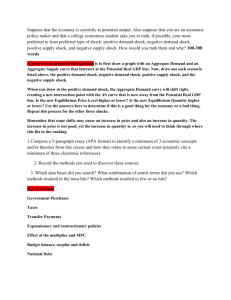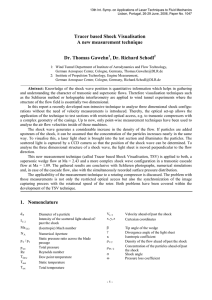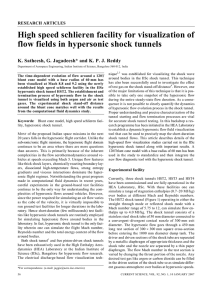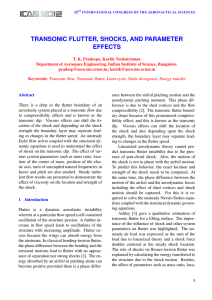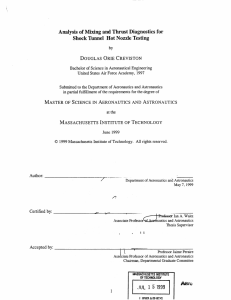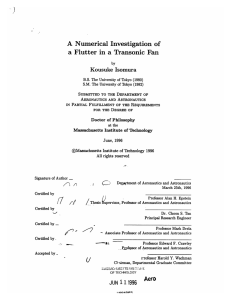Tracer based shock visualisation A new measurement technique Dr. Thomas Gawehn
advertisement
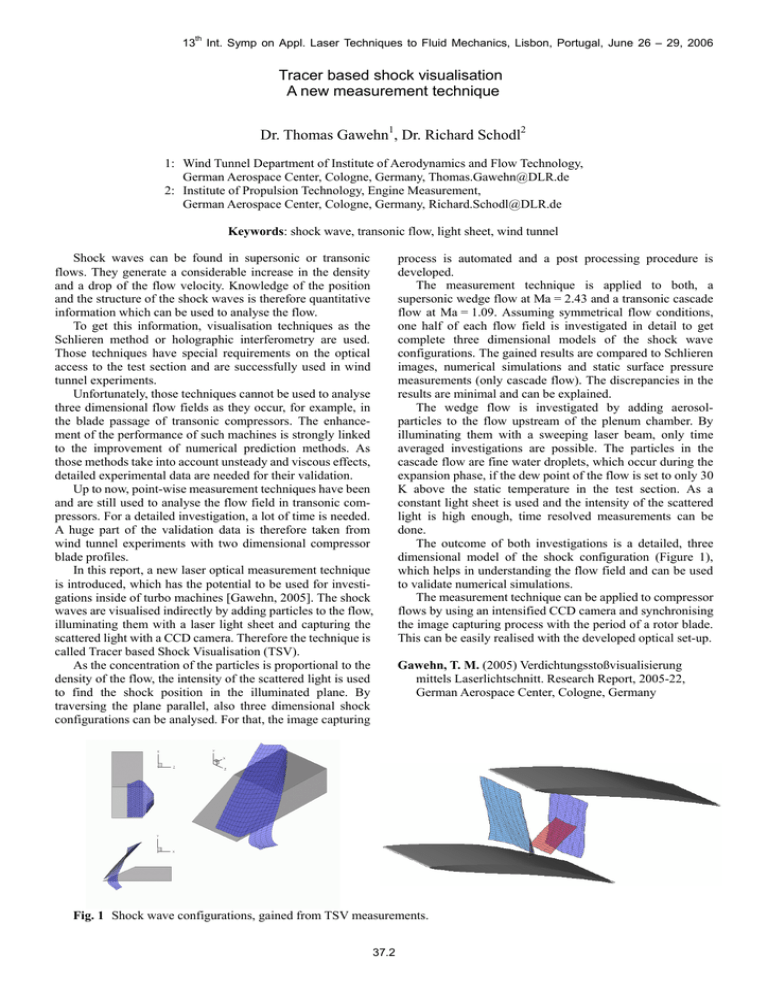
13th Int. Symp on Appl. Laser Techniques to Fluid Mechanics, Lisbon, Portugal, June 26 – 29, 2006 Tracer based shock visualisation A new measurement technique Dr. Thomas Gawehn1, Dr. Richard Schodl2 1: Wind Tunnel Department of Institute of Aerodynamics and Flow Technology, German Aerospace Center, Cologne, Germany, Thomas.Gawehn@DLR.de 2: Institute of Propulsion Technology, Engine Measurement, German Aerospace Center, Cologne, Germany, Richard.Schodl@DLR.de Keywords: shock wave, transonic flow, light sheet, wind tunnel Shock waves can be found in supersonic or transonic flows. They generate a considerable increase in the density and a drop of the flow velocity. Knowledge of the position and the structure of the shock waves is therefore quantitative information which can be used to analyse the flow. To get this information, visualisation techniques as the Schlieren method or holographic interferometry are used. Those techniques have special requirements on the optical access to the test section and are successfully used in wind tunnel experiments. Unfortunately, those techniques cannot be used to analyse three dimensional flow fields as they occur, for example, in the blade passage of transonic compressors. The enhancement of the performance of such machines is strongly linked to the improvement of numerical prediction methods. As those methods take into account unsteady and viscous effects, detailed experimental data are needed for their validation. Up to now, point-wise measurement techniques have been and are still used to analyse the flow field in transonic compressors. For a detailed investigation, a lot of time is needed. A huge part of the validation data is therefore taken from wind tunnel experiments with two dimensional compressor blade profiles. In this report, a new laser optical measurement technique is introduced, which has the potential to be used for investigations inside of turbo machines [Gawehn, 2005]. The shock waves are visualised indirectly by adding particles to the flow, illuminating them with a laser light sheet and capturing the scattered light with a CCD camera. Therefore the technique is called Tracer based Shock Visualisation (TSV). As the concentration of the particles is proportional to the density of the flow, the intensity of the scattered light is used to find the shock position in the illuminated plane. By traversing the plane parallel, also three dimensional shock configurations can be analysed. For that, the image capturing process is automated and a post processing procedure is developed. The measurement technique is applied to both, a supersonic wedge flow at Ma = 2.43 and a transonic cascade flow at Ma = 1.09. Assuming symmetrical flow conditions, one half of each flow field is investigated in detail to get complete three dimensional models of the shock wave configurations. The gained results are compared to Schlieren images, numerical simulations and static surface pressure measurements (only cascade flow). The discrepancies in the results are minimal and can be explained. The wedge flow is investigated by adding aerosolparticles to the flow upstream of the plenum chamber. By illuminating them with a sweeping laser beam, only time averaged investigations are possible. The particles in the cascade flow are fine water droplets, which occur during the expansion phase, if the dew point of the flow is set to only 30 K above the static temperature in the test section. As a constant light sheet is used and the intensity of the scattered light is high enough, time resolved measurements can be done. The outcome of both investigations is a detailed, three dimensional model of the shock configuration (Figure 1), which helps in understanding the flow field and can be used to validate numerical simulations. The measurement technique can be applied to compressor flows by using an intensified CCD camera and synchronising the image capturing process with the period of a rotor blade. This can be easily realised with the developed optical set-up. Gawehn, T. M. (2005) Verdichtungsstoßvisualisierung mittels Laserlichtschnitt. Research Report, 2005-22, German Aerospace Center, Cologne, Germany Fig. 1 Shock wave configurations, gained from TSV measurements. 37.2




